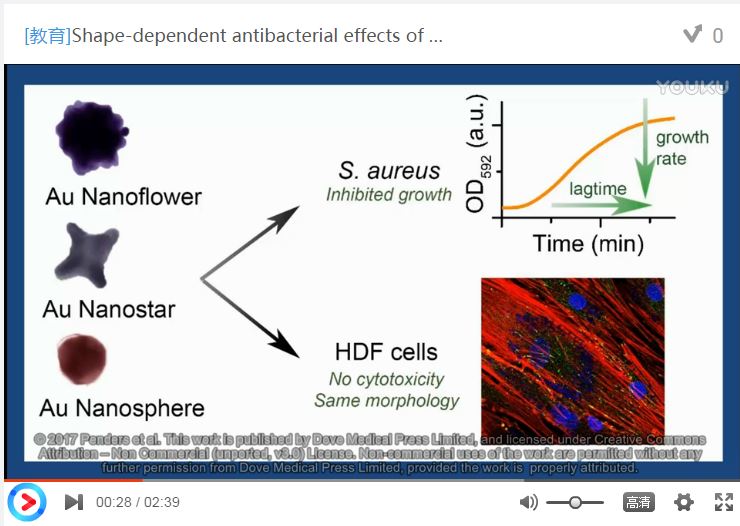9 0 5 7 8
论文已发表
注册即可获取德孚的最新动态
IF 收录期刊
- 2.6 Breast Cancer (Dove Med Press)
- 3.9 Clin Epidemiol
- 3.3 Cancer Manag Res
- 3.9 Infect Drug Resist
- 3.6 Clin Interv Aging
- 4.8 Drug Des Dev Ther
- 2.8 Int J Chronic Obstr
- 8.0 Int J Nanomed
- 2.3 Int J Women's Health
- 3.2 Neuropsych Dis Treat
- 4.0 OncoTargets Ther
- 2.2 Patient Prefer Adher
- 2.8 Ther Clin Risk Manag
- 2.7 J Pain Res
- 3.3 Diabet Metab Synd Ob
- 4.3 Psychol Res Behav Ma
- 3.4 Nat Sci Sleep
- 1.9 Pharmgenomics Pers Med
- 3.5 Risk Manag Healthc Policy
- 4.5 J Inflamm Res
- 2.3 Int J Gen Med
- 4.1 J Hepatocell Carcinoma
- 3.2 J Asthma Allergy
- 2.3 Clin Cosmet Investig Dermatol
- 3.3 J Multidiscip Healthc

Shape-dependent antibacterial effects of non-cytotoxic gold nanoparticles
Authors Penders J, Stolzoff M, Hickey DJ, Andersson M, Webster TJ
Received 12 October 2016
Accepted for publication 7 February 2017
Published 29 March 2017 Volume 2017:12 Pages 2457—2468
DOI https://doi.org/10.2147/IJN.S124442
Checked for plagiarism Yes
Review by Single-blind
Peer reviewers approved by Dr Alexander Kharlamov
Peer reviewer comments 4
Editor who approved publication: Professor Israel (Rudi) Rubinstein
Abstract: Gold nanoparticles (AuNPs) of various shapes (including spheres, stars
and flowers), with similar dimensions, were synthesized and evaluated for their
antibacterial effects toward Staphylococcus aureus , a bacterium
responsible for numerous life-threatening infections worldwide. Optical growth
curve measurements and Gompertz modeling showed significant AuNP shape- and
concentration-dependent decreases in bacterial growth with increases in
bacterial growth lag time. To evaluate prospective use in in vivo systems, the
cytotoxicity of the same AuNPs was evaluated toward human dermal fibroblasts in
vitro by 3-(4,5 dimethylthiazol-2-yl)-5-(3-carboxymethoxyphenyl)-2-(4-sulfophenyl)-2H-tetrazolium
(MTS) viability assays and confocal microscopy. No indication of any mammalian
cell toxicity or morphological effects was found. Additionally, it was observed
that the AuNPs were readily internalized in fibroblasts after 4 days of
incubation. Most importantly, the results of the present study showed that gold
nanoflowers in particular possessed the most promising non-cytotoxic mammalian
cell behavior with the greatest shape-dependent antibacterial
activity-promising properties for their future investigation in a wide range of
anti-infection applications.
Keywords: gold, nanoparticles, nanoflowers,
nanostars, S. aureus , fibroblasts
摘要视频链接:Shape-dependent antibacterial effects of non-cytotoxic gold
nanoparticles
